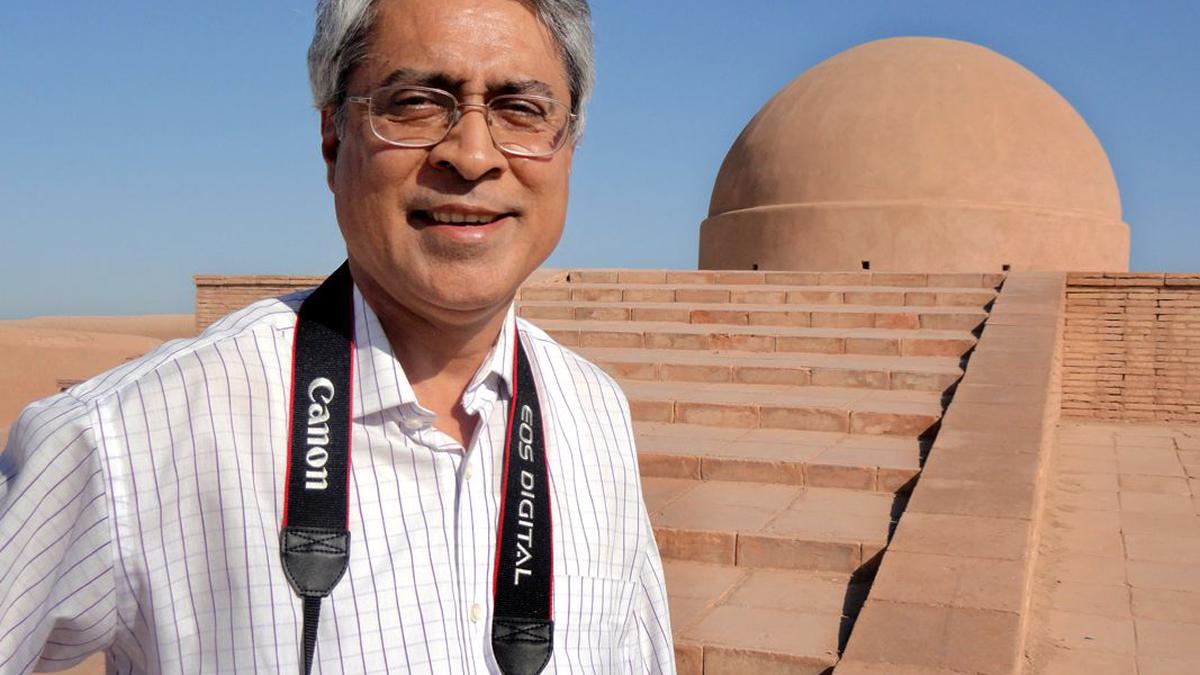
Into the spotlight
The Hindu
Explore the ancient Ajanta caves in Maharashtra through the lens of filmmaker and art historian Benoy K. Behl.
Carved into a horseshoe-shaped cliff along the Waghora River in Maharashtra, 30 Ajanta caves date back to the 2nd century BCE. Within them, they nurture a treasure of rock-cut architecture and exquisite mural paintings. Film-maker, art-historian and photographer Benoy K. Behl shines a light, quite literally, on these gems.
In Lost Ancient Art Revealed!, Behl’s ongoing show at the India International Centre (IIC), visitors get a glimpse of the paintings based on the life of Buddha. Weighed down by time and the vagaries of nature, the frescoes — one of the finest examples of Buddhist art in India, are in a fragile state today. It is vital that as many people as possible find wonder and pleasure in these incredibly detailed paintings inside the caves, painted in complete darkness centuries ago. “These paintings are spiritual in nature. They are not just elaborate but also advanced in technical virtuosity,” says Behl, who has taken over 53,000 photographs of Asian monuments and art heritage and made 146 documentaries.
Behl has painstakingly showcased 40 pictures of paintings after digitally restoring them. The senior art historian spent quite some time in the 1990s and early 2000s documenting the site, which is a complex comprising viharas and shrines with approximately 29 caves. He subsequently carried out digital restoration but was reluctant to exhibit.
“During COVID-19, I got a little time to review my work and realised it’s time to release it in view of the haphazard digital restoration work that was being carried out regarding the site. I wanted to underline how thoughtfully technology can be used in the world of art,” says Behl, who also unveiled the new edition of his book The Ajanta Caves (Thames & Hudson).
While he has documented the entire complex, the exhibition showcases a few eminent works from caves numbers 1, 2, and 17. Behl has captured the Mahajanaka Jataka, depicting the story of Prince Janaka of Mithila. “There is another beautiful mural from cave number 1 that shows women grinding spices. In the digitally restored work, I have been able to clearly show the one in the middle is pushing back her hair while grinding spices. I have digitally restored much of the damage of the paintings. They can now be seen nearer to their original glory,” says Behl.
Another interesting mural is ‘Queen and Attendants’ from Cave 3, Badami, 6th century CE. It has been revealed through Behl’s photography in 2001 and his subsequent careful digital restoration. Through his digital restoration, he has removed graffiti from the works.
How did Behl capture the damaged remnants of ancient painting in the dark interiors of caves and temples? Well, by using low-light photography. “I pioneered the technique of low-light photography about three decades ago. In 1991, the then Director General of the Archeological Survey of India wrote to me, “You have conquered the darkness”!”











